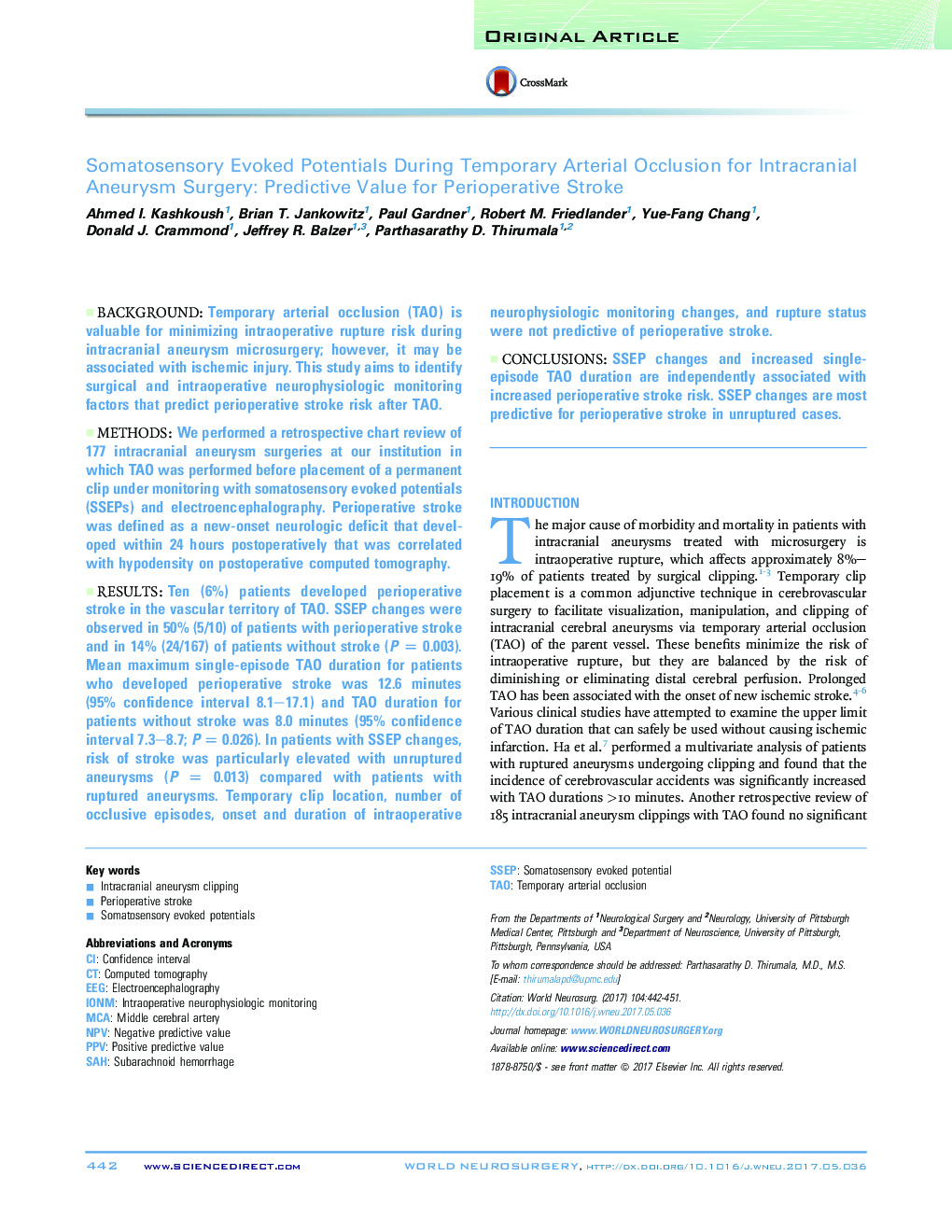| کد مقاله | کد نشریه | سال انتشار | مقاله انگلیسی | نسخه تمام متن |
|---|---|---|---|---|
| 5634442 | 1581451 | 2017 | 10 صفحه PDF | دانلود رایگان |

BackgroundTemporary arterial occlusion (TAO) is valuable for minimizing intraoperative rupture risk during intracranial aneurysm microsurgery; however, it may be associated with ischemic injury. This study aims to identify surgical and intraoperative neurophysiologic monitoring factors that predict perioperative stroke risk after TAO.MethodsWe performed a retrospective chart review of 177 intracranial aneurysm surgeries at our institution in which TAO was performed before placement of a permanent clip under monitoring with somatosensory evoked potentials (SSEPs) and electroencephalography. Perioperative stroke was defined as a new-onset neurologic deficit that developed within 24 hours postoperatively that was correlated with hypodensity on postoperative computed tomography.ResultsTen (6%) patients developed perioperative stroke in the vascular territory of TAO. SSEP changes were observed in 50% (5/10) of patients with perioperative stroke and in 14% (24/167) of patients without stroke (PÂ = 0.003). Mean maximum single-episode TAO duration for patients who developed perioperative stroke was 12.6 minutes (95%Â confidence interval 8.1-17.1) and TAO duration for patients without stroke was 8.0 minutes (95% confidence interval 7.3-8.7; PÂ = 0.026). In patients with SSEP changes, risk of stroke was particularly elevated with unruptured aneurysms (PÂ = 0.013) compared with patients with ruptured aneurysms. Temporary clip location, number of occlusive episodes, onset and duration of intraoperative neurophysiologic monitoring changes, and rupture status were not predictive of perioperative stroke.ConclusionsSSEP changes and increased single-episode TAO duration are independently associated with increased perioperative stroke risk. SSEP changes are most predictive for perioperative stroke in unruptured cases.
Journal: World Neurosurgery - Volume 104, August 2017, Pages 442-451